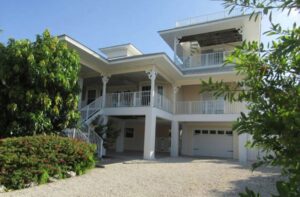Your Home's Value
What Is A CMA?

If it’s done correctly, a Comparative Market Analysis (CMA) or sometimes referred to a (BPO) Broker Price Opinion can be the next best thing to an appraisal in approximating the value of a property.
The purpose of the CMA is to analyze data from properties similar to the subject that have sold recently in order to project the realistic price at which the subject property would sell. REALTORS® and Brokers tend to develop their own methodologies for doing CMA’s. We are not an appraiser’s office, but what we’ve always done is make upward and downward adjustments to the projected value of the subject based on features and characteristics of the comparable we use.
Admittedly, these are subjective, and some are based on “gut” feelings while other adjustments come about through rules of thumb we have developed from experience. But putting a value on real estate is an inexact science at best, and this methodology has worked well for us over the years. We use a completely different method for projecting the value of land and property with residential development potential.
Location Is Everything
The REALTOR® or Broker who does the CMA should be very picky about selecting comparable properties. This means looking first for properties in the same neighborhood or subdivision since these are likeliest to be virtually identical to the subject. If there are non-available then a search in 1-mile radius is usually done. Differences in location can be very difficult to accurately adjust for, so the “comps” should resemble the subject’s location as closely as possible.
Timing Is Essential
When did the potential “comps” close? We try to use comparable sales data that is no more than 6 months old so we don’t have to adjust for older sales. However, this depends on current conditions, so if it’s a slow market, we may have to reach back farther in time. In normal markets we don’t use pending sales (not closed yet) and active comparables. But in our present market we may or may not look at these other listings to identify the current trend in pricing.
Style Effects Value
Construction style and types are very different from house to house. Our neighborhoods were not built like the traditional tract type homes, which would give a level of conformity from neighborhood to neighborhood. We try to only evaluate types of construction, concrete block versus frame built, year built and legal square footage under roof and location to sort through the appropriate comparables.
Size Is Relevant (both of the house and the lot)
For differences in house square footage (at or above grade areas only), we use a factor of approximately $75/SF. This is not intended to represent actual building costs but rather my estimate of the value that buyers in my area would place on the house size. Likewise, we determine a value from the tax assessor’s office for additional square footage of the land per square foot if the comparable is larger/smaller that the subject property being evaluated. If the subject or “comp” consisted of one or more separately deeded parcels (buildable lots), then the amount of adjustment would be my estimated value of the building lot.
Rooms, Condition and Amenities
We also adjust for differences in the number of bedrooms and baths, as well as for garage, pool, water location. Adjusting for these elements can be tricky because my evaluation of potential “comps” is usually based on drive-by evaluations supplemented by MLS and database information and conversations with the agents involved in the transaction. Things we take note of include maintenance-free exteriors, decks, type of flooring, new or remodeled kitchens and baths and other capital improvements.
Finished Product
Once all this information is compiled and inserted into our evaluation software program. A realistic price range for sale is determined for the owner. Again this is only an estimate of value and market conditions and seller motivation will have a bearing.
In our present market it’s advisable to be very aggressive in pricing of the home for sale. Currently, the inventory of properties is huge and the competition is fierce. The product must be the BEST of the best in its price category to be considered by the buyers on the market.

